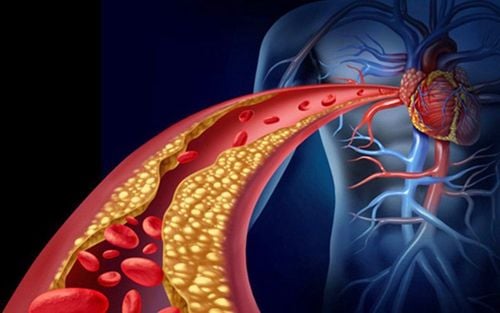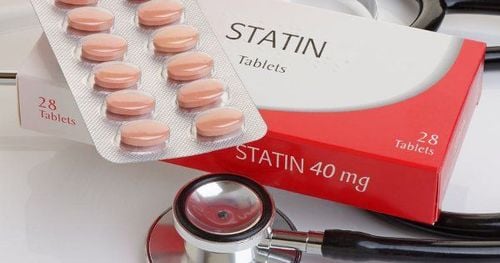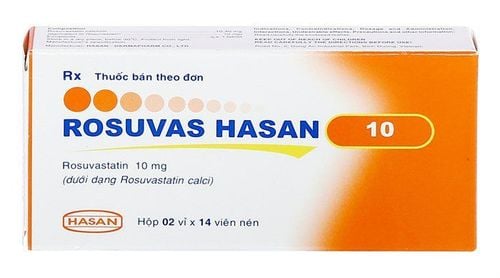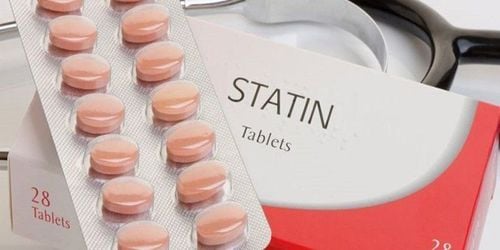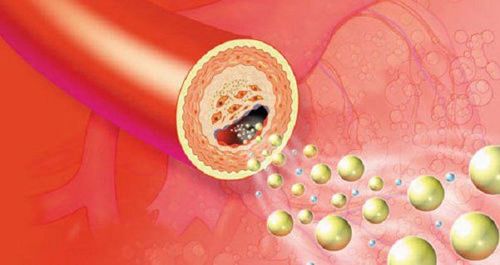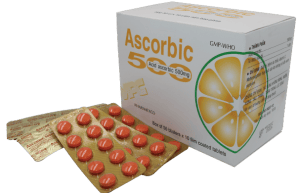This is an automatically translated article.
The article was professionally consulted by Dr. Tran Quoc Tuan - Emergency Medicine Doctor - Emergency Resuscitation Department - Vinmec Phu Quoc International General Hospital. Doctor Tran Quoc Tuan has more than 12 years of experience in emergency resuscitation.Dyslipidemia is one of the risk factors for cardiovascular disease. However, this cardiovascular risk factor belongs to a modifiable risk group based on the treatment regimen for dyslipidemia.
1. Definition of dyslipidemia
Dyslipidemia is an increase in plasma cholesterol, triglycerides (TG) or both, or a decrease in the concentration of high-density lipoprotein (HDL-C), or an increase in the concentration of low-density lipoprotein (HDL-C) (LDL-C), which increases the process of atherosclerosis.
Increased plasma cholesterol:
Normal: Blood cholesterol < 5.2 mmol/l (< 200 mg/dl) Limit raised: Blood cholesterol from 5.2 - 6.2 mmol/l (200 - 239 mg/dl ) Hypercholesterolemia: >6.2 mmol/l (>240 mg/dl) Hypertriglyceridemia:
Normal: Blood triglycerides <1.7 mmol/l (<150 mg/dl). Limit increase: Triglyceride in the blood from 1.7-2.25 mmol/l (150-199 mg/dl). Increased Triglyceride: Triglyceride in the blood from 2.26 - 5.64mmol/l (200 - 499mg/dl). Very elevated: Blood triglycerides > 5.65 mmol/l (> 500 mg/dl). Lowering HDL-C - Lipoprotein has protective properties on the vessel wall, lowering HDL-C is a high risk for atherosclerosis:
Normal: HDL-C > 0.9 mmol/l. When HDL-C <0.9 mmol/l (<35mg/dl) is decreased.
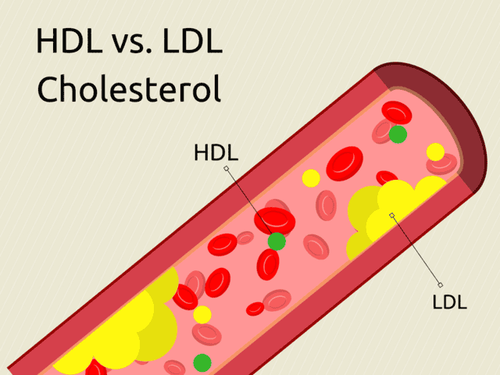
Lipid máu HDL-C - Lipoprotein và LDL–C - Lipoprotein
Normal: LDL-C <3.4 mmol/l (<130 mg/dl) Limit raised: LDL-C from 3.4 to 4.1 mmol /l (130-159 mg/dl) Massively elevated: LDL-C > 4.1 mmol/l (>160 mg/dl) Mixed dyslipidemia:
Mixed dyslipidemia is when Cholesterol > 6, 2 mmol/l and triglycerides in the range of 2.26 - 4.5 mmol/l.
2. Treatment of dyslipidemia
2.1 Principles of treatment of hyperlipidemia Treatment of dyslipidemia must combine lifestyle changes and medication. Changing lifestyle is the first indication, including increasing exercise - physical activity, especially those who work sedentary, adjusting the diet to suit the condition and nature of work.
Drugs to lower blood lipids Changing lifestyle after 2-3 months but not bringing the desired effect, it is necessary to appoint treatment of dyslipidemia with drugs that lower blood lipids.
2.2 Drugs to treat dyslipidemia Statins (HMG - CoA reductase inhibitors) The mechanism of action of the drug is to inhibit the enzyme Hydroxymethylglutaryl CoA Reductase, which is an enzyme that synthesizes total cholesterol, reducing endogenous total cholesterol, Stimulates the synthesis of LDL-c receptors, thereby increasing the capture of LDL-c in the liver. The results reduce LDL-C, VLDL, total cholesterol, Triglycerides and increase HDL-C. In addition, the statin drug group also reduces the inflammatory process of the vascular endothelium, helps in the degeneration of atheroma, and increases the synthesis of nitric oxide by endothelial cells.
Indications for treatment: increase LDL-c, increase total cholesterol.
Fibrate group Effect: reduce Triglyceride. In addition, fibrates also increase HDL-C.
Some active ingredients in the fibrate group: Gemfibrozil, Clofibrate
Indications for treatment: increase Triglyceride.
Nicotinic acid group (Niacin, vitamin PP). The drug has the effect of lowering Triglycerides by inhibiting the breakdown from fat and reducing the synthesis of Triglycerides in the liver, inhibiting the synthesis and esterification of fatty acids in the liver, increasing apoB degradation, reducing VLDL, reducing LDL-C and increasing HDL-C (due to decreased clearance of apoA-I).
Indications for treatment: increase LDL-C, decrease HDL-C, increase Triglyceride.
Resin group Mechanism of action: Resin exchanges Cl- ions with bile acids, increases the synthesis of bile acids from cholesterol, increases bile secretion and reduces cholesterol in the liver, stimulates the synthesis of LDL-C receptors and increases excretion LDL-C.
Some active ingredients of the Resin group: Cholestyramine, Colestipol, Colesevelam
Indicated for treatment in case of elevated LDL-C.
Drug Ezetimibe Mechanism of action: inhibits absorption of total cholesterol in the intestine, reduces LDL-C and increases HDL-C.
Indications for treatment: increase LDL cholesterol -C.
Omega 3 (fish oil)
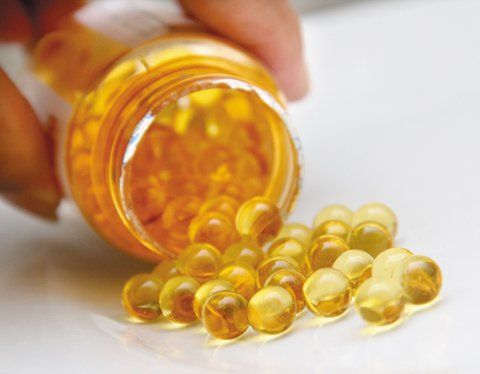
Dầu cá có tác dụng tăng dị hóa Triglycerid ở gan giúp giảm cân và duy trì cân nặng
Mechanism of action: Increases catabolism of triglycerides in the liver.
Indicated in case of increased Triglycerid.
>> See more: Drugs for treating dyslipidemia
In addition to applying the lipid disorder treatment regimen as prescribed by the doctor, the patient needs to combine exercise and physical activity to help lose weight and maintain weight. maintain ideal weight, reduce total cholesterol, triglycerides, LDL-c and increase HDL-c, and help control blood sugar and blood pressure well. Time of exercise - physical activity about 30 -45 minutes/day, 5 days/week, intensity and duration depends on health status, especially those with blood pressure, coronary artery disease, heart failure heart ...
During the treatment of dyslipidemia, the patient should have a reasonable diet to prevent complications of dyslipidemia:
Limit energy, especially those who are obese. Limit fat containing a lot of saturated fatty acids such as pork fat, beef, lamb... Reduce cholesterol in egg yolks, butter, shrimp... Increase the amount of unsaturated fatty acids in plants such as oils soybeans, olive oil, corn oil, fish fat... The diet has a balance between glucid, lipid and protid, avoiding the use of a lot of glucid (a reasonable ratio is: energy provided by glucide accounts for about 50%. energy of the meal, of lipid accounts for about 30% and protein accounts for about 20%). Limit alcohol. Supplement fiber, vitamins, trace elements from vegetables, tubers and fruits.
Please dial HOTLINE for more information or register for an appointment HERE. Download MyVinmec app to make appointments faster and to manage your bookings easily.




